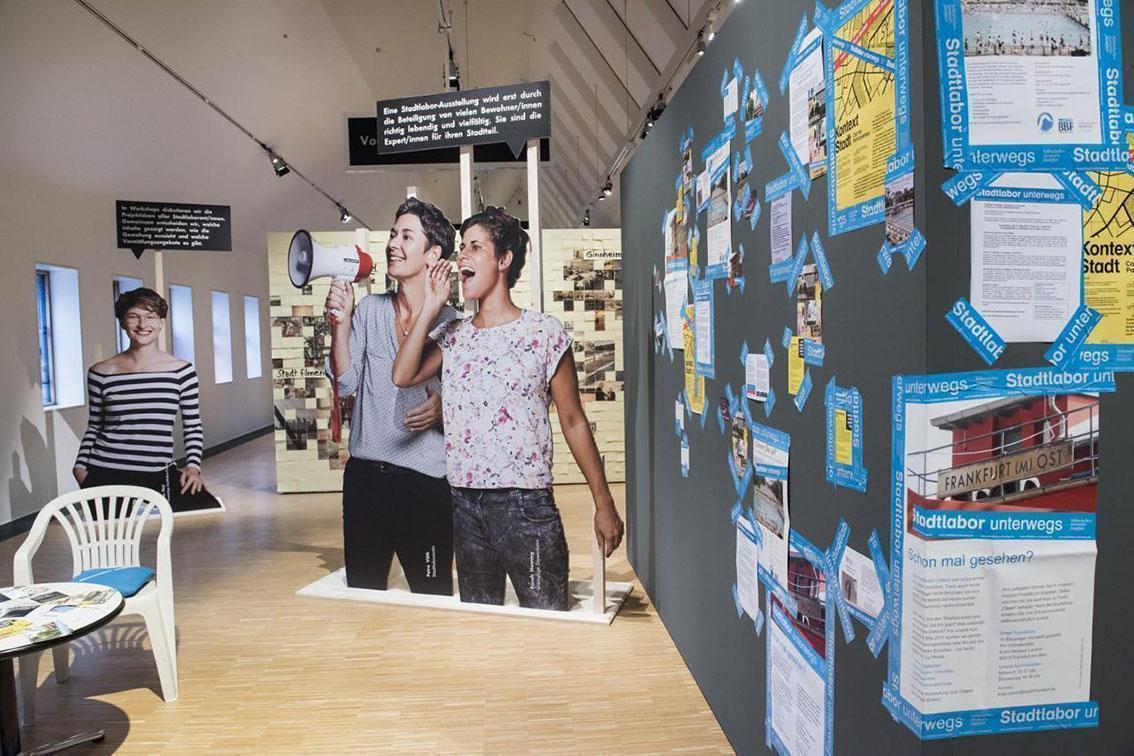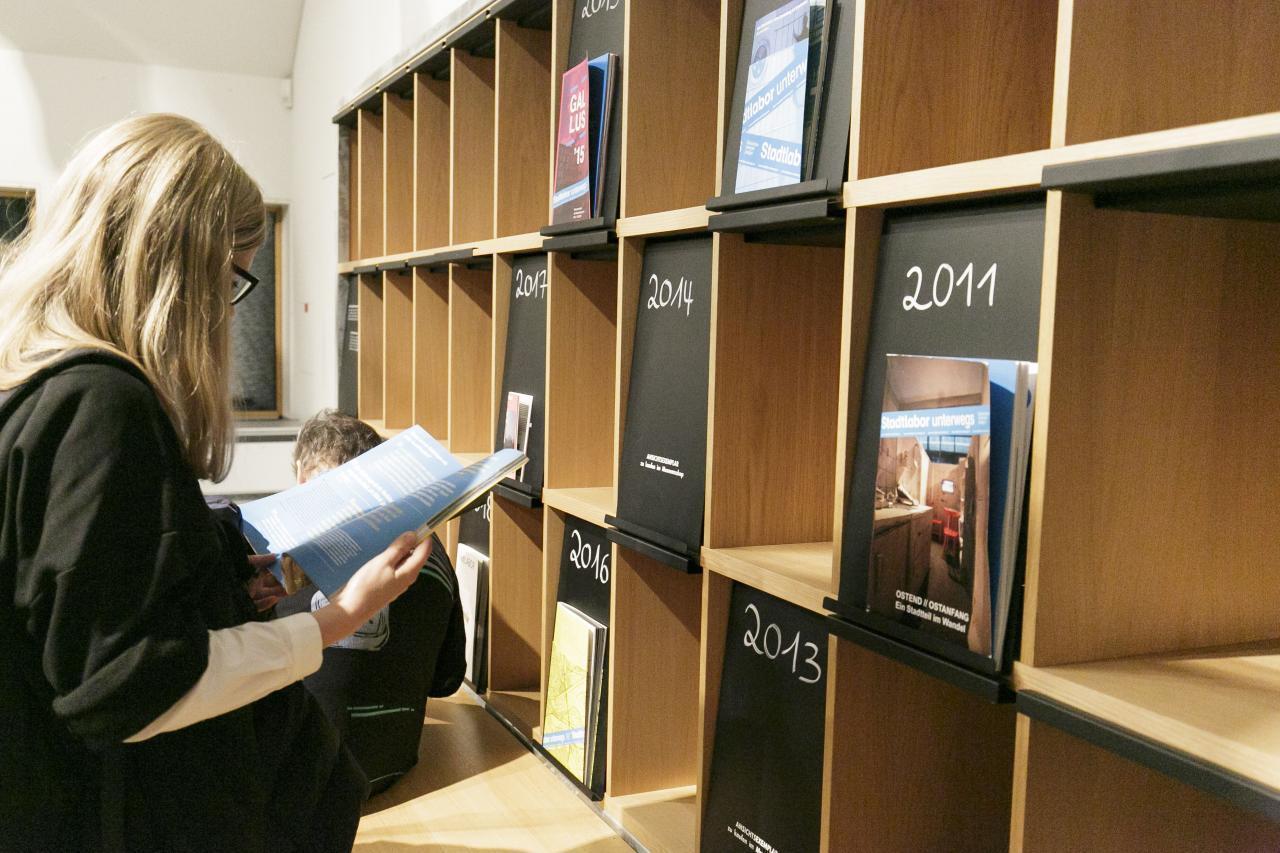G-town.
Livingroom Ginnheim
24.3 - 4.7.2013
Cosy village centre, modern apartment blocks: Ginnheim is a diverse, ambivalent and multicultural district of Frankfurt.
The third exhibition of the City Lab on the move series approached the question of how people live here in “G-town, in the livingroom Ginnheim”. In 18 contributions, voluntary co-curators and about 200 participants showed us how they see their district. This not only created a bridge between old and new views of Ginnheim but also a connection between the exhibition organisers and visitors. This exhibition was, above all, an invitation to get involved, enhance networking and reflect.
Project blog
Documentation
<-- More text -->
The district of Ginnheim is well-suited to this kind of multi-faceted approach as it is characterised by heterogeneous settlement and population structures: 15,000 people from all over the world live here, whether in the historic village centre with its half-timbered houses, traditional inns and family businesses or in the settlement planned by Ernst May at Höhenblick or the Platensiedlung. The US troops stationed in Frankfurt lived in the latter settlement with their families in “housings” constructed in 1955 and, after the Allies left, lots of new families moved in here, with around 50% of them being migrants. Transculturality is the norm in Ginnheim because it has a proportion of inhabitants who are German nationals with a migration background that is above average for Frankfurt and a proportion of foreigners of approx. 25%.
The exhibition is comprised of individual contributions from various co-curators and cooperation partners: The history working group engaged with some residential buildings that were particularly interesting from a historical point of view, such as the “Red Block” that was constructed in 1913, or with buildings that still combine home and work life under one roof.
Contributions from day care centres and youth centres explore the experiences of children and young people in their district and how they engage with their environment. The Astrid-Lindgren school carried out a project week on the “Street I live on”. Children from three day care centres documented which places and spaces play a role in their everyday lives. The wish for stronger networking between residents of the individual settlements expressed by project particitpants was taken up and implemented. This enabled the gap between old Ginnheim and new Ginnheim to be bridged and explored further in the framework programme.
In the context of “Home life”, food also plays an important role: cooking together and talking about country-specific eating habits and recipes were incorporated in the exhibition contributions by the youth centre and the Astrid Lindgren school care. This enabled Ginnheim residents of different origins and living situations to create and strengthen connections.
Under the umbrella of the Federal Association of Migrant Women based in Ginnheim, various groups came together and participated by making their own contributions to the exhibition. The women used artistic and documentary methods to explore the nuanced differences between a home, their native country and being at home and reflected on the role their individual living situation played in this.
The future of Ginnheim was the subject of contributions dealing with redensification of housing in the district as well as urban gardening as a form of active appopriation and design of one´s own living space.
Nachbarschaftszentrum Ginnheim (Initiator), Colorado Park adventure playground, Astrid Lindgren school, Astrid Lindgren day care, Bundesverband der Migrantinnen e.V., Break 14, Caritas Frankfurt, Deutscher Museumsbund, Evangelische Bethlehemgemeinde, Freies Schauspiel Ensemble Frankfurt, Gasthaus Adler, Ginnheim history working group, Grünflächenamt Frankfurt am Main, University of Applied Sciences Würzburg-Schweinfurt, Department of Architecture and Civil Engineering, jan & jan architektencooperation, Ginnheim Youth Centre, KiTa Morgenstern, Kulturmobil, KulturRegion Frankfurt Rhein/Main, KiZ 23, KiZ Am Wiesenrain, Literaturhaus Frankfurt, Nachbarschaftsbüro Franz Werfel Straße, Ortsbeirat 9, Sancta Familia, Schülerladen Roter Drache, Geldmuseum der Deutschen Bundesbank, TSV Ginnheim, Wuselvilla, individuals.
Exhibition location: TSV Ginnheim, Am Mühlgarten 2, 60431 Frankfurt am Main


